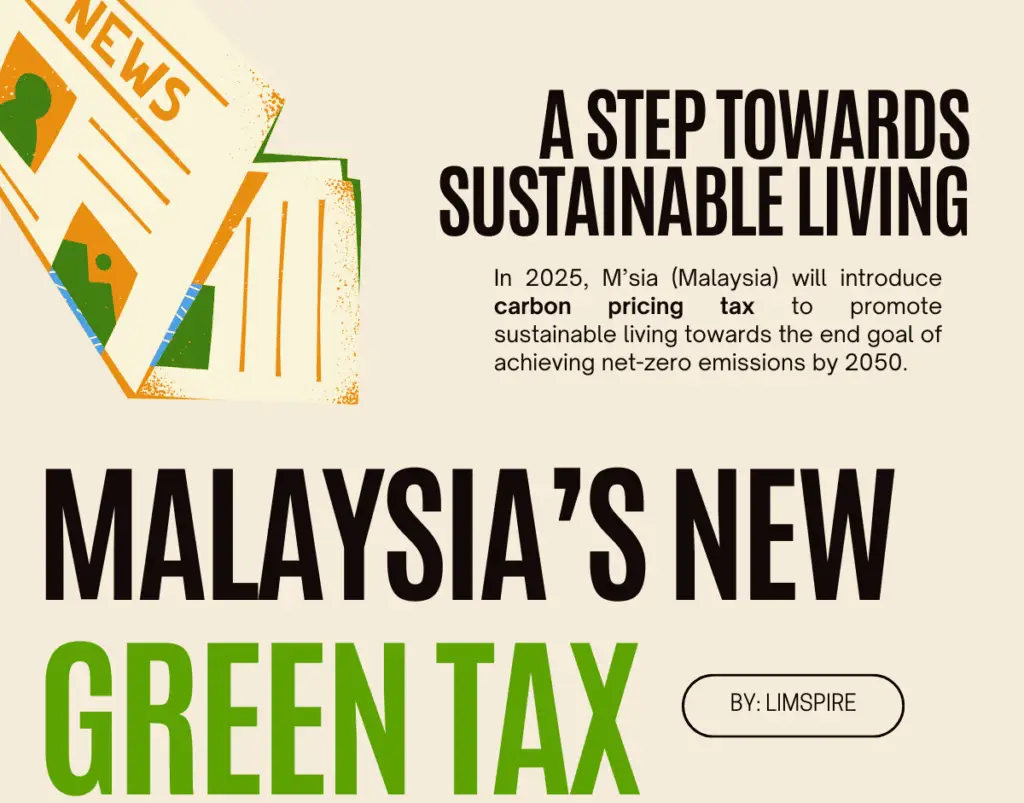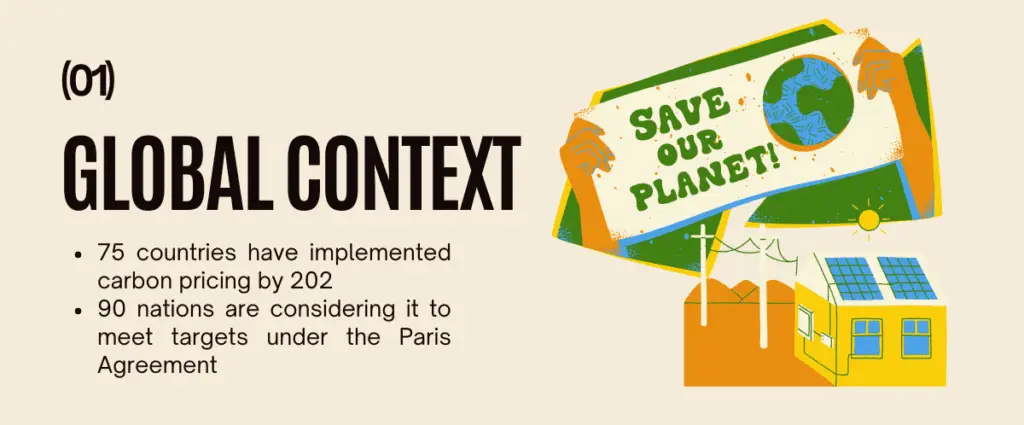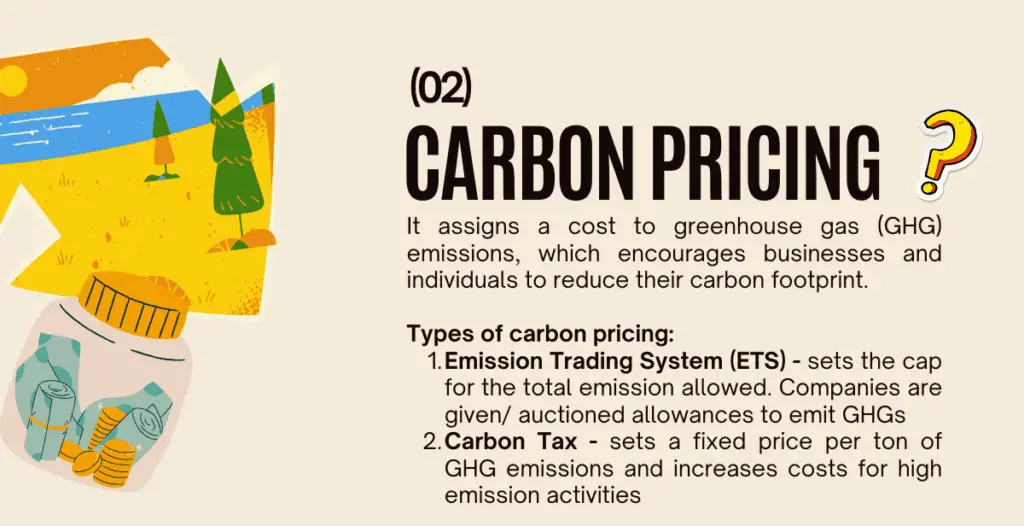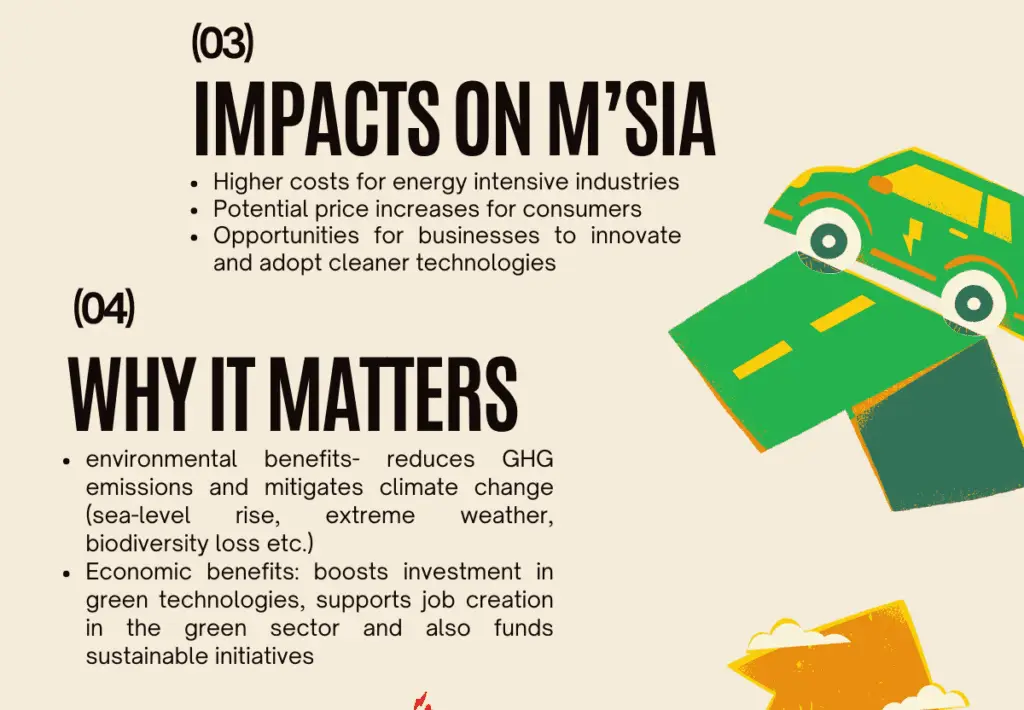
Get ready for a greener Malaysia! In 2025, the Malaysian government will introduce a carbon pricing tax to promote sustainable living and combat climate change. This tax aligns with Malaysia’s ambition to achieve net-zero carbon emissions by 2050.
In addition to the carbon pricing tax, the government will also implement several other new taxes, including:
- Unhealthy food tax: To combat rising obesity rates and promote healthier lifestyles.
- Inheritance tax: To prevent the accumulation of unproductive wealth within families.
- High-value goods tax (HVGT): To address wealth inequality and support economic development.
- Artificial intelligence (AI) tax: To encourage growth in high-tech industries.
Table of contents
A Global Trend

Malaysia joins many other countries adopting carbon pricing mechanisms. By 2022, 75 countries had successfully implemented them, proving their effectiveness in reducing emissions and generating revenue for green investments.
Moreover, 90 nations are considering carbon pricing to meet their nationally determined contributions (NDCs) under the Paris Agreement.
What is Carbon Pricing, and How Will it Impact Malaysians?

Carbon pricing reduces greenhouse gas (GHG) emissions by assigning a cost to carbon content or GHG emissions. Emitters pay this cost, motivating them to reduce their carbon footprint.
In Malaysia, this tax may take the form of an emission trading system (ETS) or a carbon tax:
- ETS: An ETS caps total emissions, and companies receive or buy allowances to emit GHGs. Businesses reducing emissions can sell their excess allowances, creating a trading market.
- Carbon Tax: A carbon tax sets a fixed price per ton of GHG emissions, raising costs for high-emission activities. As a result, businesses and individuals choose cleaner options.
The Impact
The carbon pricing tax will affect various sectors and consumers across Malaysia. For example, energy-intensive industries will face higher operational costs, likely increasing prices. However, it also offers businesses opportunities to innovate and adopt cleaner technologies.

Why Carbon Pricing Matters
Despite potential short-term cost hikes, carbon pricing is crucial for a sustainable future. Moreover, it offers significant long-term environmental and economic benefits.
Economic Transformation: The tax boosts investments in green technologies, renewable energy, and job creation in the green sector. Additionally, revenue generated can fund green initiatives.
Environmental Protection: Placing a price on carbon reduces GHG emissions, mitigating climate change impacts like sea-level rise, extreme weather, and biodiversity loss.
Your Role as a Consumer
Carbon pricing can sometimes feel like a distant, technical concept, but its impact on our everyday lives and future is profound. How do you think we can better communicate the long-term benefits — like cleaner air, stable economies, and a thriving planet — to inspire action?
Share your thoughts in the comments below!
References
- NST Malaysia. (2024, October 3). Govt expected to unveil 5 new taxes to promote health, sustainability.
- World Bank Group. (2016, April 21). Carbon Pricing Panel – Setting a Transformational Vision for 2020 and beyond.
- World Economic Forum. (2022, February 4). What are the advantages and challenges of a carbon tax?

Wow, Malaysia’s improving its green initiatives! Nice!
Good content👍